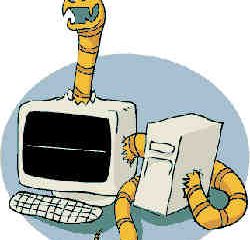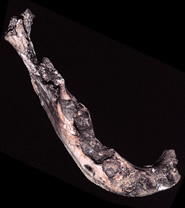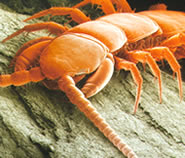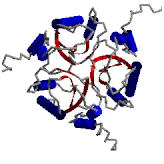
New Analysis of Computer Worm Indicates Additional Destructive Payload Symantec Corp. (Nasdaq: SYMC), a world leader in Internet security, today announced that new analysis of W32.Nimda.A@mm reveals that the worm contains an additional destructive payload that will not only require detection, but removal. The new analysis indicates that the worm is a file infector, overwriting .exe files. W32.Nimda.A@mm is a mass-mailing worm that utilizes multiple methods to spread itself. The worm

A virus that exploits a gene defect common to cancer cells and selectively kills them may offer a new avenue for therapy, suggest researchers in Nature.
The gene p53 is mutated in about half of all human cancers (an event directly implicated in tumour progression) so a way of killing such cells offers the attractive possibility of treating multiple cancer types with one drug. The human adeno-associated virus (AAV) selectively induces cell death in p53-defective cells, Peter Beard and his co

New-found jawbone hints at 200 thousand years of care in the community.
Care for the elderly and disabled may have been around a lot longer than we thought. The discovery of a jawbone scarred by severe gum disease hints that a toothless early human got by with a little help from his friends.
Minus teeth, unable to chew his or her food, the owner of the deformed jawbone nonetheless survived “for at least several months,” estimates anthropologist Erik Trinkaus of Washington U

Silicon still has a lot to offer the microelectronics industry
The end is not nigh for silicon chips. They have “enormous remaining potential”, predicts a new analysis of the limits of integrated circuit technology 1 .
By around 2011, chips could be holding thousands of times more transistors than the billions they house today, calculate James Meindl and colleagues at Georgia Institute of Technology in Atlanta. Trillion-transistor chips are known as ’terascal

Centipede genealogy has scientists and supercomputers foxed
Four-fifths of all known creatures are arthropods. So immense is this family that no one knows who is related to whom. To resolve the relationships between the family members, the insects, spiders, crustaceans and centipedes, two research groups have performed state-of-the-art analyses – and come up with two different answers.
The main problem is the centipedes and millipedes, collectively called the myriapods. One

Two new techniques will assist the rapid cataloguing of proteins’ roles in the cell.
Decoding the human genome sequence was merely a preliminary step towards understanding how living cells work. Two new techniques should assist the next step: working out the functions of all the proteins that the genes encode 1,2 .
Selectively sticking to small molecules is central to most proteins’ function. Proteins generally have delicately sculpted binding sites, clefts i

Quantum defects have the potential to act as ultra-sensitive sensors that could offer new kinds of navigation or biological sensor technology. One type of these defect systems, nitrogen vacancy (NV)…

Breakthrough non-invasive technology for imaging through scattering media. Researchers introduce image-guided computational holographic wavefront shaping, offering fast and versatile solutions for complex imaging challenges. New study introduces a novel computational…

Modern astronomy has clung to the belief that the relativistic outflows or jets responsible for the existence of electromagnetic radiation of particularly high energies are located in the nuclei of…

In a pilot study, researchers at the University of Zurich have used artificial intelligence to detect antibiotic resistance in bacteria for the first time. This is an important first step…

New Method for Measuring Luminescence Lifetime. Researchers at the Max Planck Institute for Marine Microbiology, Leibniz-Institute for Baltic Sea Research and University of Copenhagen introduce an innovative approach to image…

UFZ study demonstrates for the first time the toxicological relevance of chemical mixtures as they occur in humans. “In our everyday lives, we are exposed to a wide variety of…

… and thermal post-treatment of flexible ultra-thin glass. Ultra-thin glass offers great potential for modern high-tech applications. Despite its superior properties compared to polymer films, the material has not yet…

Conventional catalysts for hydrogen production via water electrolysis usually contain precious metals and are expensive. However, cheaper alternatives have been developed, for example cobalt-manganese catalysts. They have a high activity…

The European Commission’s targets are ambitious: the ReFuelEU Aviation Regulation stipulates a 60 percent reduction in CO₂ emissions from aviation by 2050 compared to 1990 levels. A comprehensive EU Space…

New photonic computing method uses electromagnetic waves to solve partial differential equations rapidly. In the fields of physics, mathematics, and engineering, partial differential equations (PDEs) are essential for modeling various…

Neuroscientists show how fine motor skills of neural prostheses can be improved. Researchers at the German Primate Center – Leibniz Institute for Primate Research in Göttingen have developed a novel…

The TUM and the Pfennigparade Foundation have started a three-year research collaboration. The research will focus on the potential of robotics and AI-based technologies to help people with motor disabilities…